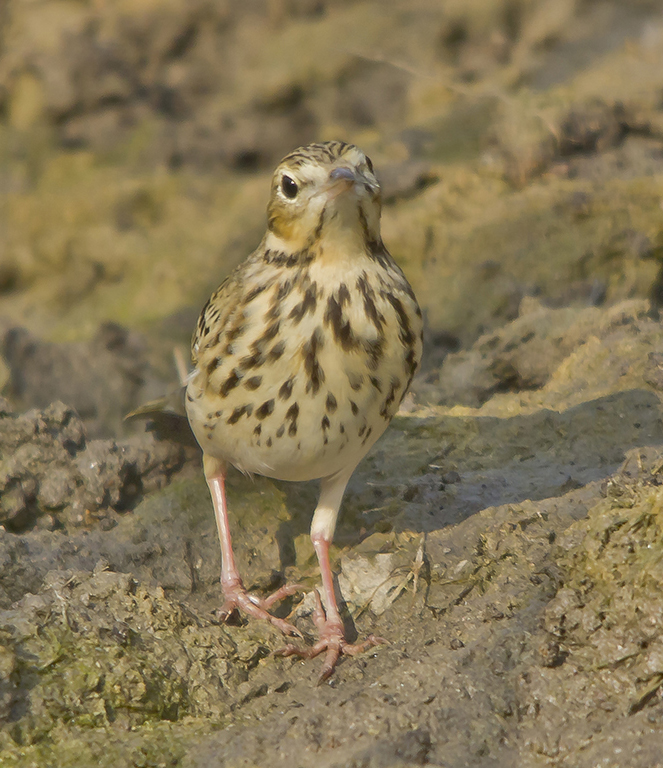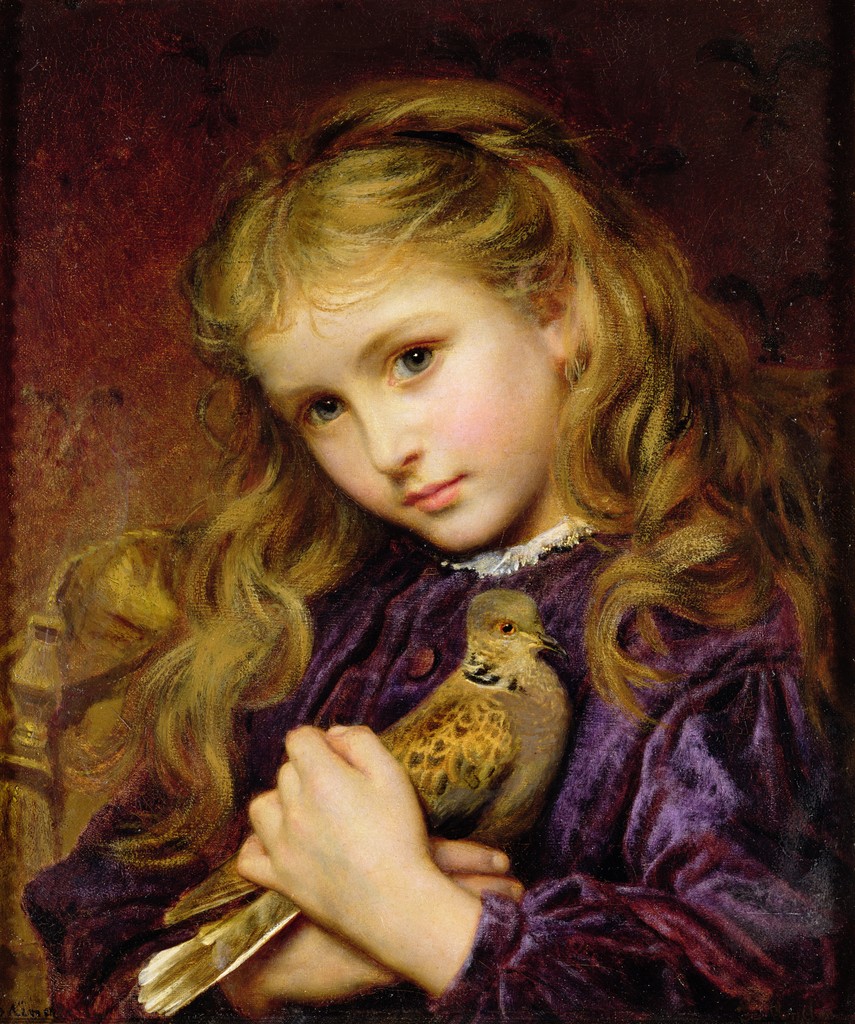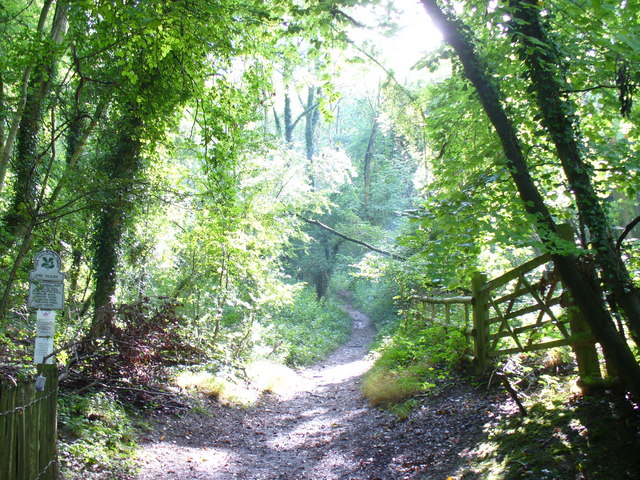|
Castle Bottom NNR
Castle Bottom is a British national nature reserve located near Yateley in Hampshire. It is part of Castle Bottom to Yateley and Hawley Commons, which is a Site of Special Scientific Interest, and Thames Basin Heaths Special Protection Area for the conservation of wild birds Geography The nature reserve is situated south-west of Yateley and is on the north-west border of Blackbushe Airport. The reserve is a small lowland site of around , containing two valley mires, with heathland and woodland habitats. Each of the valley mires has an acidic stream running through them. History There is evidence that the area was used by humans as far back as 1800 to 550 BC, with discovery of some ancient burial mounds. There is evidence of banks being built in the Western Mire, but it is not possible to date exactly when they were built The land was owned by the Bramshill estate until 1952, when it was sold. The land was last owned by a manufacturer of quarry equipment before the council p ... [...More Info...] [...Related Items...] OR: [Wikipedia] [Google] [Baidu] |
National Nature Reserve (United Kingdom)
Some statutory nature reserves are designated by national bodies in the United Kingdom, and are known as national nature reserves. Great Britain In Great Britain, nature reserves designed under Part III of the National Parks and Access to the Countryside Act 1949 that are deemed to be of national importance may be designated as statutory 'national nature reserves' by the relevant national nature conservation body (Natural England, Scottish Natural Heritage, or Natural Resources Wales) using section 35(1) of the Wildlife and Countryside Act 1981. If a nature reserve is designated by a local authority in Great Britain, then the resulting statutory nature reserve will be referred to as a local nature reserve. England In England, 229 national nature reserves are designated by Natural England. Scotland In Scotland, 43 national nature reserves are designated by NatureScot. Wales In Wales, 76 national nature reserves are designated by Natural Resources Wales. Northern Ireland ... [...More Info...] [...Related Items...] OR: [Wikipedia] [Google] [Baidu] |
Common Pipistrelle
The common pipistrelle (''Pipistrellus pipistrellus'') is a small pipistrelle microbat whose very large range extends across most of Europe, North Africa, South Asia, and may extend into Korea. It is one of the most common bat species in the British Isles. In Europe, the northernmost confirmed records are from southern Finland near 60°N. In 1999, the common pipistrelle was split into two species on the basis of different-frequency echolocation calls. The common pipistrelle uses a call of 45 kHz, while the soprano pipistrelle echolocates at 55 kHz. Since the two species were distinguished, a number of other differences, in appearance, habitat and food, have also been discovered. Taxonomy and etymology It was described as a new species in 1774 by German naturalist Johann Christian Daniel von Schreber. Schreber initially placed it in the genus ''Vespertilio'', calling it ''Vespertilio pipistrellus''. In 1839, Keyserling and Blasius reclassified the species, naming ... [...More Info...] [...Related Items...] OR: [Wikipedia] [Google] [Baidu] |
Song Thrush
The song thrush (''Turdus philomelos'') is a Thrush (bird), thrush that breeds across the West Palearctic. It has brown upper-parts and black-spotted cream or buff underparts and has three recognised subspecies. Its distinctive Birdsong, song, which has repeated musical phrases, has frequently been referred to in poetry. The song thrush breeds in forests, gardens and parks, and is partially bird migration, migratory with many birds wintering in southern Europe, North Africa and the Middle East; it has also been introduced into New Zealand and Australia. Although it is not threatened globally, there have been serious population declines in parts of Europe, possibly due to changes in farming practices. The song thrush builds a neat mud-lined bird nest#Cup, cup nest in a bush or tree and lays four to five dark-spotted blue bird egg, eggs. It is omnivorous and has the habit of using a favourite stone as an "anvil" on which to break open the shells of land snail, snails. Like other ... [...More Info...] [...Related Items...] OR: [Wikipedia] [Google] [Baidu] |
Tree Pipit
The tree pipit (''Anthus trivialis'') is a small passerine bird which breeds across most of Europe and the Palearctic as far East as the East Siberian Mountains. It is a long-distance migrant moving in winter to Africa and southern Asia. The scientific name is from Latin: ''anthus'' is the name for a small bird of grasslands, and the specific '' trivialis'' means "common". Taxonomy The tree pipit was formally described by the Swedish naturalist Carl Linnaeus in 1758 in the tenth edition of his ''Systema Naturae'' under the binomial name ''Alauda trivialis''. Linnaeus noted that the species occurred in Sweden. The specific epithet ''trivialis'' is Latin meaning "common" or "ordinary" from Latin ''trivium'' meaning "public street". The tree pipit is now placed in the genus ''Anthus'' that was introduced in 1805 by the German naturalist Johann Matthäus Bechstein. Two subspecies are recognised: * ''A. t. trivialis'' (Linnaeus, 1758) – breeds across Europe to southwest Siberia, ... [...More Info...] [...Related Items...] OR: [Wikipedia] [Google] [Baidu] |
Lesser Spotted Woodpecker
The lesser spotted woodpecker (''Dryobates minor'') is a member of the woodpecker family Picidae. It was formerly assigned to the genus ''Dendrocopos'' (sometimes incorrectly spelt as ''Dendrocopus''). Some taxonomic authorities continue to list the species there. The range of the lesser spotted woodpecker is the Palearctic region, but several subspecies are recognised. Taxonomy The lesser spotted woodpecker was listed by the Swedish naturalist Carl Linnaeus in 1758 in the 10th edition of his ''Systema Naturae'' under the binomial name ''Picus minor''. The species was moved to the genus ''Dendrocopos'' by the German naturalist Carl Ludwig Koch in 1816. A molecular phylogenetic study published in 2015 based on nuclear and mitochondrial DNA sequences found that the species placed in the genus ''Dendrocopos'' did not form a monophyletic group. In the revised generic classification, the lesser spotted woodpecker was placed in the resurrected genus ''Dryobates'', that had originall ... [...More Info...] [...Related Items...] OR: [Wikipedia] [Google] [Baidu] |
European Turtle Dove
The European turtle dove (''Streptopelia turtur'') is a member of the bird family Columbidae, the doves and pigeons. It breeds over a wide area of the south western Palearctic including north Africa but migrates to northern sub-Saharan Africa to winter. Taxonomy The European turtle dove was formally described by the Swedish naturalist Carl Linnaeus in 1758 in the tenth edition of his '' Systema Naturae''. He placed it with all the other pigeons in the genus '' Columba'' and coined the binomial name ''Columba turtur''. The specific epithet ''turtur'' is the Latin word for a turtle dove. Linnaeus gave the locality as "India". This was an error and the type locality has been designated as England. The species is now placed in the genus ''Streptopelia'' that was introduced in 1855 by the French ornithologist Charles Lucien Bonaparte. Four subspecies are recognised: * European turtle dove (''S. t. turtur'') (Linnaeus, 1758) – Europe, Madeira and the Canary Islands to weste ... [...More Info...] [...Related Items...] OR: [Wikipedia] [Google] [Baidu] |
Eurasian Woodcock
The Eurasian woodcock (''Scolopax rusticola'') is a medium-small wading bird found in temperate and subarctic Eurasia. It has cryptic camouflage to suit its woodland habitat, with reddish-brown upperparts and buff-coloured underparts. Its eyes are set far back on its head to give it 360-degree vision and it probes in the ground for food with its long, sensitive bill, making it vulnerable to cold weather when the ground remains frozen. The male performs a courtship flight known as "roding" at dusk in spring. When threatened, the female can carry chicks between her legs, in her claws, or on her back while flying, though this is rarely witnessed. The world population is estimated to be 14 million to 16 million birds. Taxonomy The Eurasian woodcock was formally described by the Swedish naturalist Carl Linnaeus in 1758 in the tenth edition of his ''Systema Naturae'' under the current binomial name ''Scolopax rusticola''. The genus name is Latin for a snipe or woodcock. The specifi ... [...More Info...] [...Related Items...] OR: [Wikipedia] [Google] [Baidu] |
Eurasian Sparrowhawk
The Eurasian sparrowhawk (''Accipiter nisus''), also known as the northern sparrowhawk or simply the sparrowhawk, is a small bird of prey in the family Accipitridae. Adult male Eurasian sparrowhawks have bluish grey upperparts and orange-barred underparts; females and juveniles are brown above with brown barring below. The female is up to 25% larger than the male – one of the greatest size differences between the sexes in any bird species. Though it is a predator which specialises in catching woodland birds, the Eurasian sparrowhawk can be found in any habitat and often hunts garden birds in towns and cities. Males tend to take smaller birds, including tits, finches, and sparrows; females catch primarily thrushes and starlings, but are capable of killing birds weighing or more. The Eurasian sparrowhawk is found throughout the temperate and subtropical parts of the Old World; while birds from the northern parts of the range migrate south for winter, their southern counterp ... [...More Info...] [...Related Items...] OR: [Wikipedia] [Google] [Baidu] |
Garden Warbler
The garden warbler (''Sylvia borin'') is a common and widespread small bird that breeds in most of Europe and in the Palearctic to western Siberia. It is a plain, long-winged and long-tailed typical warbler with brown upperparts and dull white underparts; the sexes are similar and juveniles resemble the adults. Its two subspecies differ only slightly and interbreed where their ranges overlap. Due to its lack of distinguishing features, this species can be confused with a number of other unstreaked warblers. The garden warbler's rich melodic song is similar to that of the blackcap, its closest relative, which competes with it for territory when nesting in the same woodland. The preferred breeding habitat in Eurasia is open woodland with dense low cover for nesting; despite its name, gardens are rarely occupied by this small passerine bird. The clutch of four or five blotched cream or white eggs is laid in a robust cup-shaped nest built near the ground and concealed by dense ve ... [...More Info...] [...Related Items...] OR: [Wikipedia] [Google] [Baidu] |
Willow Warbler
The willow warbler (''Phylloscopus trochilus'') is a very common and widespread leaf warbler which breeds throughout northern and temperate Europe and the Palearctic, from Ireland east to the Anadyr River basin in eastern Siberia. It is strongly migratory, with almost all of the population wintering in sub-Saharan Africa. It is a bird of open woodlands with trees and ground cover for nesting, including most importantly birch, alder, and willow habitats. The nest is usually built in close contact with the ground, often in low vegetation. Like most Old World warblers (Sylviidae), this small passerine is insectivorous. In northern Europe, it is one of the first warblers to return in the spring, though later than the closely related chiffchaff. Taxonomy The willow warbler was formally described by the Swedish naturalist Carl Linnaeus in 1758 in the tenth edition of his ''Systema Naturae'' under the binomial name ''Motacilla trochilus''. The willow warbler is now one of around 8 ... [...More Info...] [...Related Items...] OR: [Wikipedia] [Google] [Baidu] |
Eurasian Hobby
The Eurasian hobby (''Falco subbuteo'') or just hobby, is a small, slim falcon. It belongs to a rather close-knit group of similar falcons often considered a subgenus '' Hypotriorchis''. Taxonomy and systematics The first formal description of the Eurasian hobby was by the Swedish naturalist Carl Linnaeus in 1758 in the tenth edition of his ''Systema Naturae'' under the present binomial name ''Falco subbuteo''. The genus name ''falco'' derives from Late Latin ''falx'', ''falcis'', a sickle, referring to the wing profile of the bird. The species name ''subbuteo'' is from Latin ''sub'', "below, less than, under" and ''buteo'', "buzzard". The species' English name comes from Old French ''hobé'' or ''hobet''. It became the trademark for the Subbuteo games company after its creator, who was an ornithologist, was refused permission to register "Hobby". Currently two subspecies are recognized: * ''F. s. subbuteo'': the nominate race is resident in Africa, Europe and Central and East ... [...More Info...] [...Related Items...] OR: [Wikipedia] [Google] [Baidu] |
Dartford Warbler
The Dartford warbler (''Curruca undata'') is a typical warbler from the warmer parts of western Europe and northwestern Africa. It is a small warbler with a long thin tail and a thin pointed bill. The adult male has grey-brown upperparts and is dull reddish-brown below except for the centre of the belly which has a dirty white patch. It has light speckles on the throat and a red eye-ring. The sexes are similar but the adult female is usually less grey above and paler below. Its breeding range lies west of a line from southern England to the heel of Italy (southern Apulia). The Dartford warbler is usually resident all year in its breeding range, but there is some limited migration. Taxonomy and systematics The Dartford warbler was first described in 1776 by the Welsh naturalist, Thomas Pennant. He introduced the English name and based his description on two specimens that had been obtained by the ornithologist John Latham from Bexley Heath, near Dartford in Kent. In 1783 Latham i ... [...More Info...] [...Related Items...] OR: [Wikipedia] [Google] [Baidu] |


.jpg)







